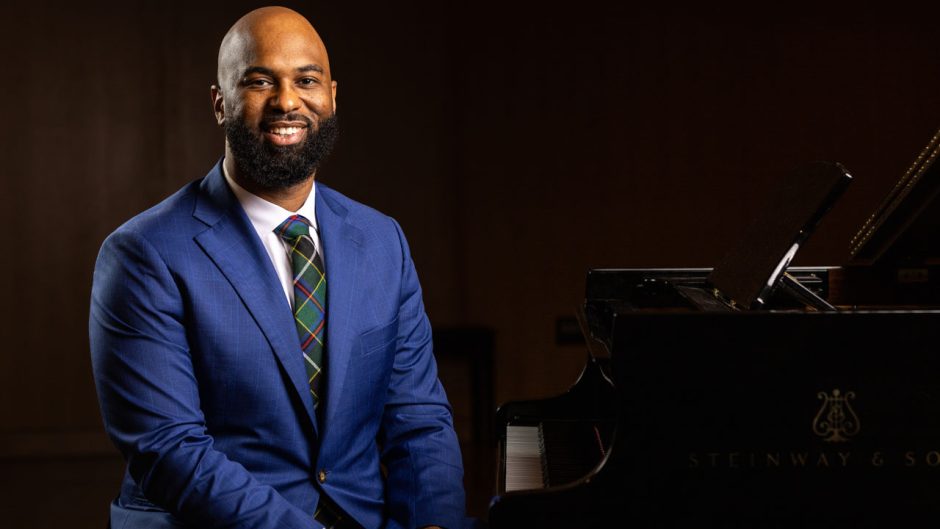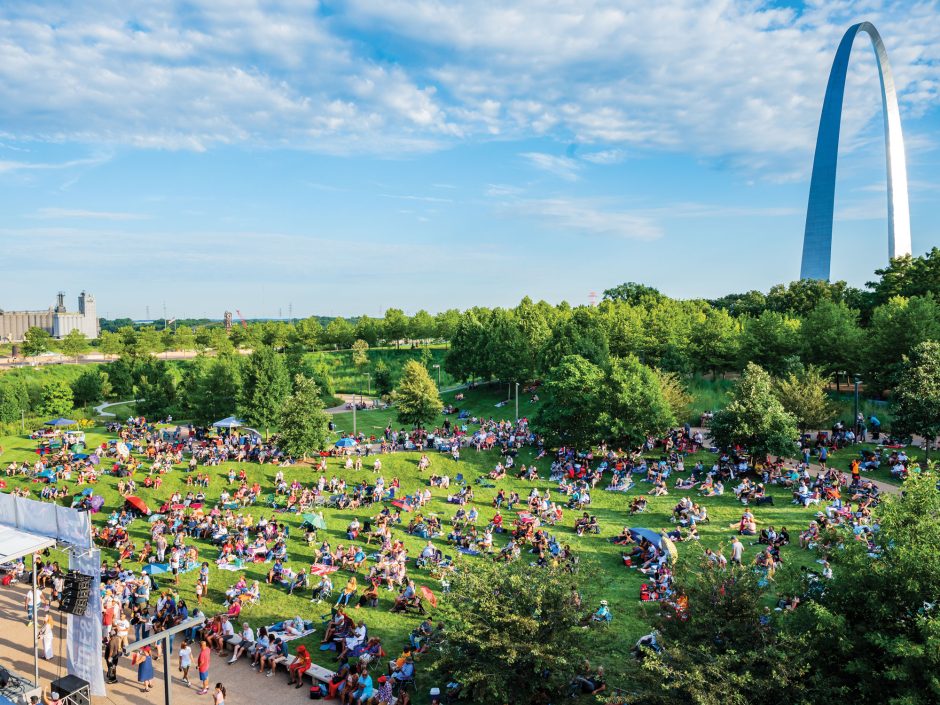
Published on Show Me Mizzou April 30, 2024
Story by Amanda E. Doyle, BJ ’94
As warmer weather sets in and daylight extends beyond dinner, many of us are carving out space for evening walks in the park or weekend picnics along favorite trails. For the millions of visitors each year to St. Louis’ most popular and celebrated green spaces, those excursions fall under the direction of a University of Missouri graduate. To be precise, four Mizzou alumni are the lead executives of some of the region’s largest parks and greenways. The Tiger quartet finds common cause, and sympathetic ears, in their work to elevate the city’s natural lands.
“We’re our own support group,” says Bill Reininger, BS ’92, director of Tower Grove Park, a 151-year-old Victorian park and National Historic Landmark in the heart of historic south St. Louis.
As with Reininger and Tower Grove Park, each has a distinct domain. Susan Trautman, BS ’80 MPA ’87, is the CEO of Great Rivers Greenway, a region-spanning network of parks and greenways. Ryan McClure, BJ ’03,is the executive director of the Gateway Arch Park Foundation, a nonprofit conservancy supporting the Gateway Arch National Park. Lesley Hoffarth, BS CiE ’88, is the president and executive director of Forest Park Forever, a private nonprofit created to restore, maintain and sustain the massive urban park in the city’s central corridor.
Combined, the four guide the support, planning and appreciation for outdoor communal gathering spots, essential components of livable cities. “The pandemic taught us that green spaces are a necessity, not an amenity,” Reininger says.
Despite their parks’ varying governance structures, funding sources, partnerships and individual personalities, these leaders are a known entity as a group, both within St. Louis and nationally. Their commonalities and a shared approach override any disagreements. McClure describes a working relationship enabled by “a genuine friendship and admiration between all of us that does not exist in a lot of communities among park leaders,” adding that “in other areas with lots of different organizations like ours, there are just competing agendas.”
Such extreme collaboration isn’t necessarily a given. It’s the secret sauce in St. Louis, though, and it has earned the city recognition far and wide, including praise from national organizations the Trust for Public Land and City Parks Alliance.
The formula is simple: “We trust each other. We all know that when we work together, the city rises together,” Trautman says.
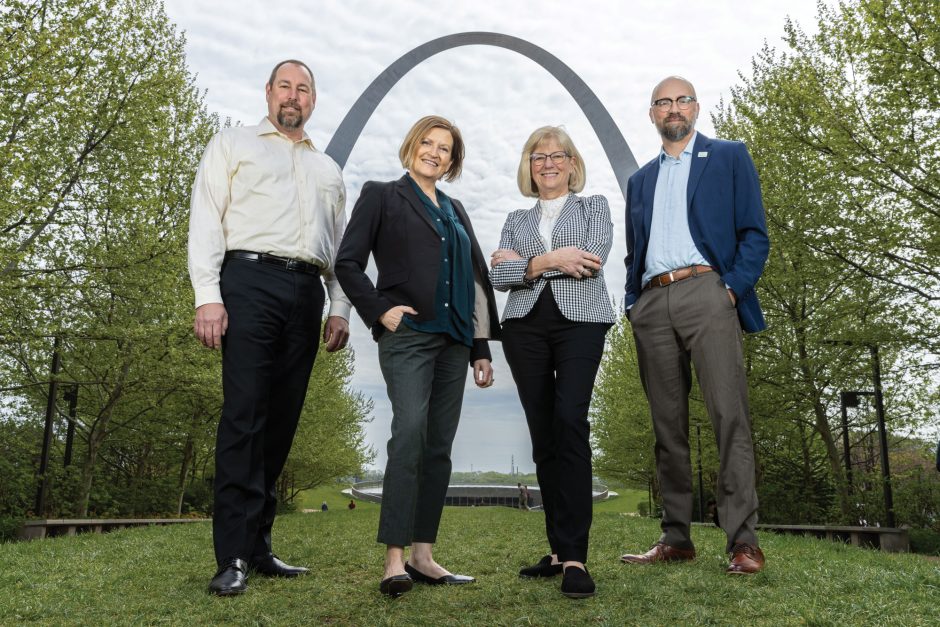
Public, private and philanthropic money make these organizations possible, but in different combinations. Tower Grove Park, for example, is overseen by a board of commissioners that is mostly separate from the city park system. Forest Park Forever has an operating agreement with the city and its parks department but does its own fundraising to support restoration projects and an endowment. Great Rivers Greenway exists as a public agency created by a voter-approved, dedicated sales tax for parks and greenways. And Gateway Arch Park Foundation emerged in 2009 as the first philanthropic partner of Gateway Arch National Park.
“In common, we share a commitment to providing incredible green spaces to people in the St. Louis region,” Trautman says — before Hoffarth finishes the sentence: “And an interest in being as welcoming and inclusive as we can to reach out to folks who wouldn’t naturally find themselves in our spaces, without some support and encouragement.”
Modern day park administration remains the kind of scrappy, resourceful field it always has been, Trautman says. “It’s legacy work. It’s a pay-it-forward kind of career.” Planning for the decades and centuries ahead embodies the proverbial wisdom of planting trees whose shade you’ll never see.
The job today, though, has become tougher and more politicized. Parks, like many public spaces, face social issues that demand direct conversation and solutions, from unhoused citizens to histories of racial inequity. The funding provided by municipal and state governmental bodies is often not enough to maintain levels of repair, cleanliness, safety and amenities modern users expect.
Each director has a story, an “aha!” moment that makes long hours of community meetings, congressional lobbying and consensus-building crystallize into meaning.
Hoffarth recalls attending the annual hot-air Balloon Glow with her then-8-year-old son. It was the first year she worked at Forest Park after a career with the Missouri Department of Transportation, she says. “We walked from the visitor center, and we get to Central Field and he starts running and he goes, ‘Wow, this is so great! You used to have a highway and now you have a park!’” McClure admits to tearing up when he sees a father and son playing catch on the Arch grounds.
Reininger still gets a thrill from the work — and from how appreciative people are when they learn what he does for a living, he says. “At dinner parties or gatherings anywhere, when people ask what I do, and I say, ‘I work for Tower Grove Park,’ the reaction is immediately, ‘Oh, my gosh! I love that place.’ They want to tell you all the ways they are connected to it.” He says he reminds everyone on the team, from the maintenance crew to office managers, that their work contributes to building community and family memories.
Meaningful moments in the field can take their creators by surprise. Trautman recalls the ribbon-cutting for a pocket park in Wellston, a tiny city in St. Louis County where years of disinvestment have taken a steep toll. “A little one-acre park is my favorite park I’ve ever built. Near the construction fencing, an elderly man was crying outside the fence, and I thought, ‘What’s wrong? ‘I never thought I’d see this day,’ he said. That has stayed with me forever.”
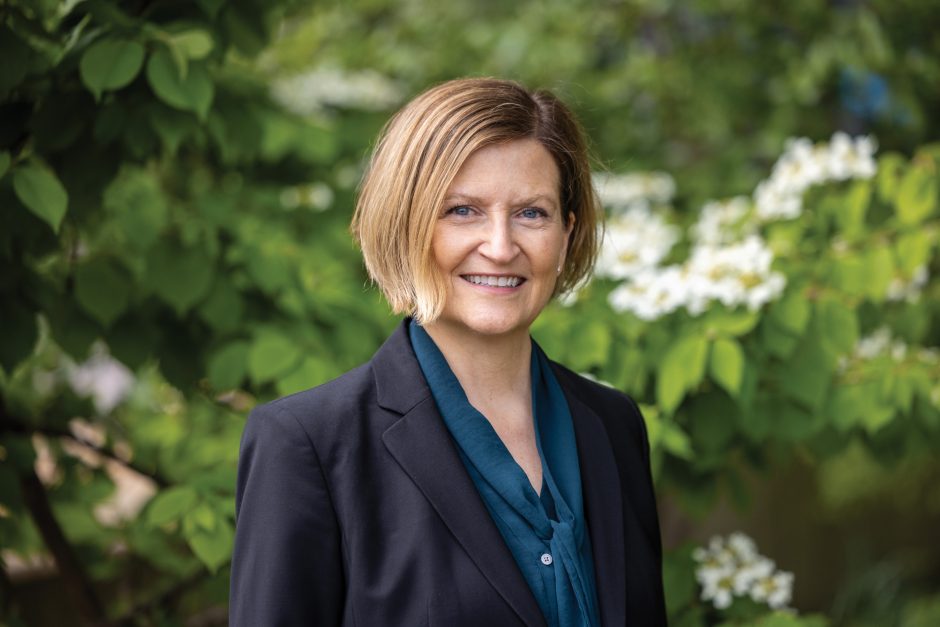
Engineered for success
Lesley Hoffarth, Forest Park Forever
Lesley Hoffarth never expected to trade her hardhat for a flowered fascinator. Yet looking around her office at Forest Park Forever, at least half a dozen of her favorite fashion hats are on display. They’re the signature of the park’s biggest fundraiser, the Hat Luncheon.
Frilly hats are a visible reminder of the twist her career took in 2010, when she left two decades at the Missouri Department of Transportation to work for the park. Hoffarth attended Mizzou as a first-generation college student from what she calls “a blue-collar, Brady Bunch blended family” in southwest Missouri, but she wasn’t sure where she would land.
She started as a computer science major but switched to music, and then housing and interior design. “When I was designing these multistory homes for class, professors said, ‘Design what you want and give it to a civil engineer to see if it’ll work.’ And I thought, ‘Forget asking and waiting. I can do that!’”
When Hoffarth interviewed on with MODOT on campus during her senior year, it immediately clicked. She took assignments focusing on bridge design, maintenance, and traffic and construction. She engineered bridges around the state, which in 1988 meant designing on a FORTRAN computer “and then walking down the hill by the Capitol to the MODOT garage to pick up your printout from the single printer we had.” Four years later she moved to St. Louis and into roadway design and project management.
The culminating project of her MODOT career was the 10-year rebuilding of I-64 through St. Louis. The project required all the hard and soft skills she’d spent years honing.
“I had a lot of coffee in kitchens and ate a lot of chocolate chip cookies walking around backyards during our five years of planning for the highway rebuild,” she says, noting the “multiple municipalities, numerous public officials, and countless neighbors we had to bring on board.”
Her work on the highway project drew the attention of Forest Park Forever, which was looking for a leader to revitalize the park after a period of stagnation. The job involved taking on maintenance, committing to an ambitious restoration and assuring the landmark park’s legacy and future. Never having worked in the nonprofit sector, Hoffarth counted on her collaborative skills and took a leap of faith. It’s been a successful formula.
“Our donors and our constituents work with and trust us because we say what we’re going to do, and we do what we say,” she says. “People continue to invest in things they feel are well managed, with good practices and an exceptional product. And we deliver exceptional places.”
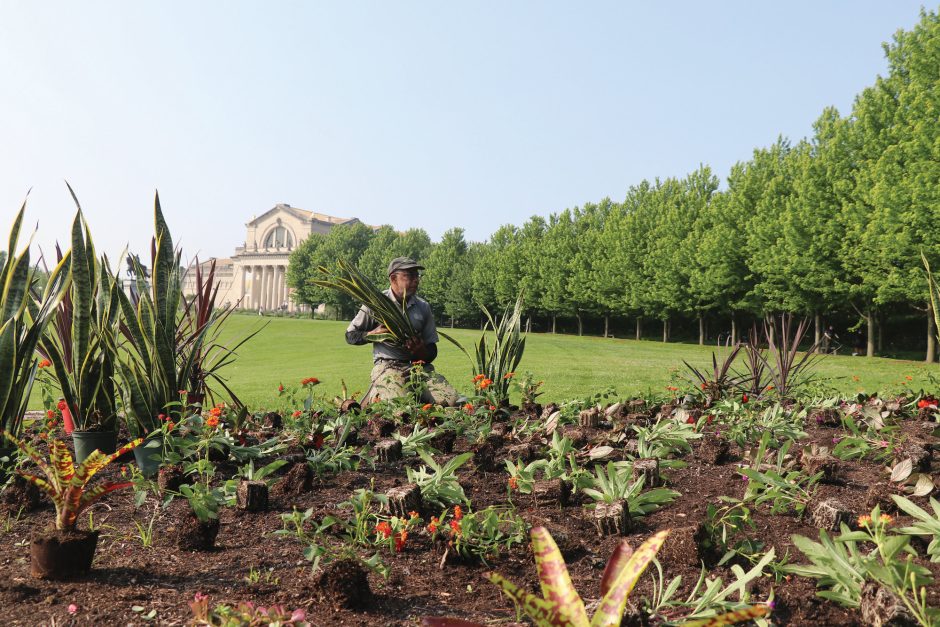


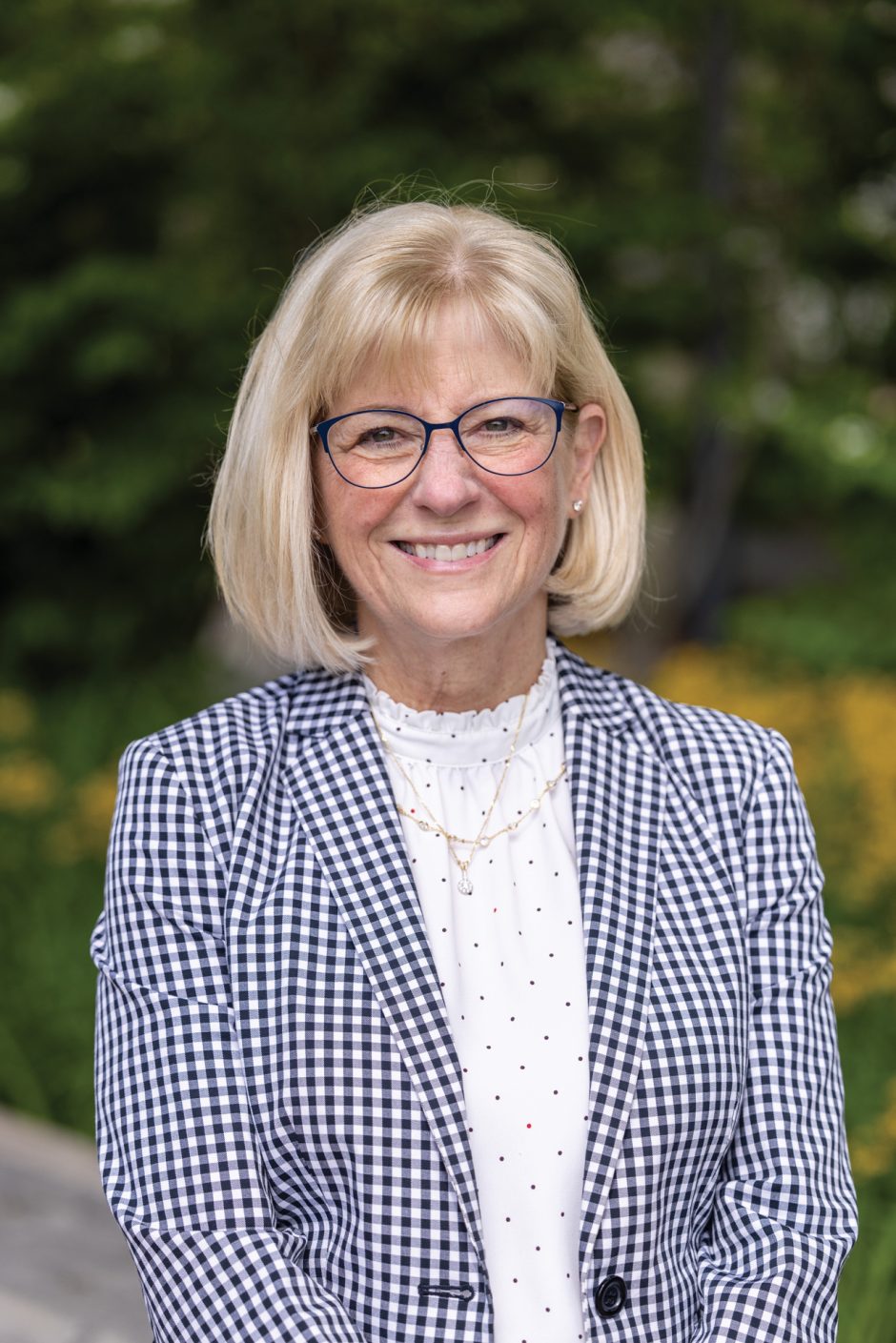
Destined for recreation
Susan Trautman, Great Rivers Greenway
Susan Trautman was the first in her family to attend college, and she made it look easy. She arrived on campus armed with a slew of AP credits from high school and “parks and recreation” as the answer to “What do you want to do?”
“That was based almost entirely on my experience of being a camp counselor for the city of Bridgeton when I was 14,” she says, laughing. Still, something about her direction must’ve been right, because she earned a bachelor’s degree in three years and thrived with the support she found at the university.
“The culture of parks and recreation is a pay-it-forward, mentoring sort of environment, and that’s the way it was in the school,” she says. She remembers the family feeling, with just 70 students in her cohort and extraordinary mentoring from people such as the late Charles “Randy” Vessel (MPA ’75).
From an internship in Scotland to work with the Missouri State Parks, Trautman gained a wide network of contacts that proved helpful as she moved through future jobs. She served in park system administration and city master planning. She opened the Center of Clayton, served the city of Des Peres as director of Parks and Recreation. She had an epiphany along the way: “I am at heart a public servant. That same parks and rec culture I encountered in school of sharing information, resources and support is still relevant to the work I want to do to benefit the community.”
Coming into leadership of Great Rivers Greenway in 2010, with a regional focus and a huge number of collaborators, presented a new kind of challenge. She’s handled it with the kind of understated aplomb displayed in her previous assignments and ended a record-breaking 2023 with a ribbon-cutting on eight new greenway projects.
Next up, the Brickline Greenway. Featured in a summer 2023 New York Times wrap-up of notable urban walks, this project tackles an ambitious set of priorities. Trautman describes it as “a transformational infrastructure project that incorporates racial equity and economic development” to help rebuild the city and keep it nationally competitive as a place that attracts and retains talent. She adds, “When it’s complete, we’ll be connected from Forest Park to the Arch, and from Tower Grove Park to Fairground Park.”



The tree guy
Bill Reininger, Tower Grove Park
Since seventh grade, Bill Reininger was headed for the trees.
“Ever since I was a kid, I wanted to live out in the woods,” he says. “And my dad said, ‘If you get a degree in forestry, you can actually get paid to do that.’ I took a personality and career test in grade school, and it said ‘forestry.’ So I pretty much knew.” He knew that meant choosing Mizzou, as it was the only Missouri university with an accredited forestry program.
He finished his degree in four years, then took an additional year to add a second bachelor’s degree in horticulture.
But a funny thing happened on the way to the forest. An internship with the forestry division of the city of St. Louis after his freshman year exposed Reininger to urban forestry, which had twin appeals. First, he gained a new appreciation for the meaning of trees in the city. “In an urban situation, every tree matters,” he says. “It’s somebody’s tree in their front yard. Or in a park, it’s potentially a tribute to somebody. It’s much different than doing forest management, where it’s just literally thousands of trees.”
Second, he realized that the culture available in a city was exactly his speed. Once he connected his desire to “play with trees” with the concerts and movies and restaurants he wanted to access, his shift to urban forestry was complete.
A highlight of his time at Mizzou was the Forestry Club, which he credits with “helping shrink the school down from tens of thousands of people to a much smaller group.” Every fall brought Conclave, a skills competition among students from other forestry schools such as Purdue and SIU-Carbondale. Traditional activities including axe throwing, buck saw and log rolling filled weekends.
Reininger’s career path spanned multiple forestry and horticulture positions, from the Missouri Botanical Garden to University City forestry to the city of Crestwood as a park operations supervisor, and then to Forest Park Forever for a decade. At Tower Grove Park, Reininger oversees a historic Victorian landmark that’s also a level II accredited arboretum and an active center of neighborhood life and recreation.
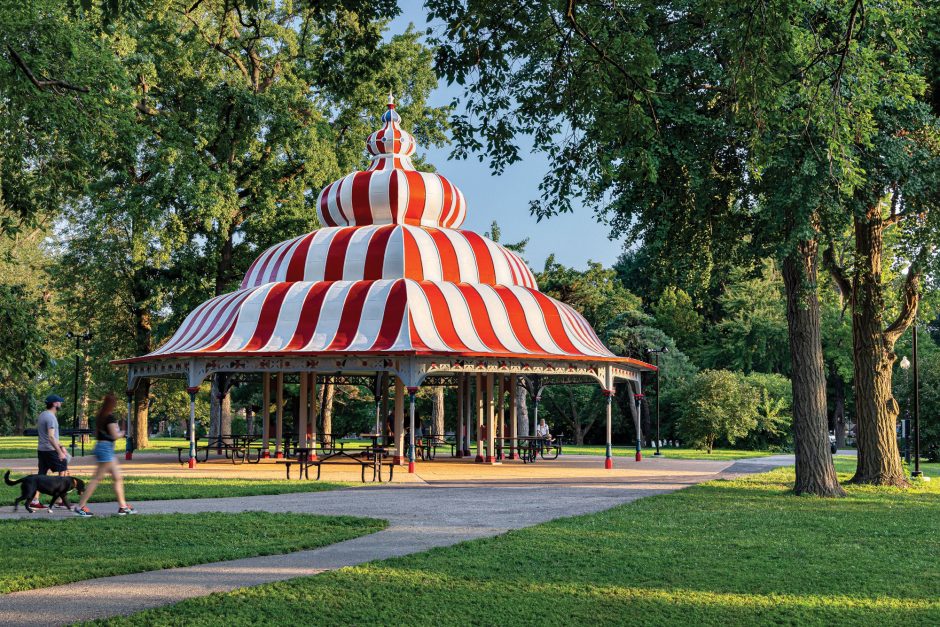

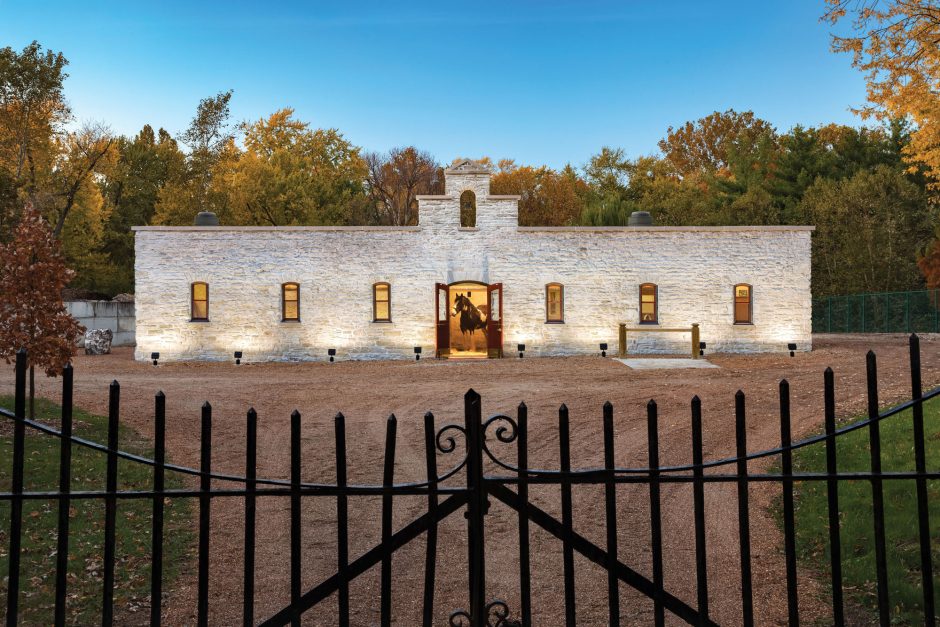

From J-School to park nerd
Ryan McClure, Gateway Arch Park Foundation
Ryan McClure seemed destined for Mizzou. A second-generation Tiger who grew up in Jefferson City, he was a cheering fan during the heyday of basketball players such as Jevon Crudup and Anthony Peeler. “I had that love for Mizzou from early on,” he says. By the time he made it to Kirkwood High School, he knew journalism was what he wanted to do, so he planned to attend the journalism school and become a broadcast producer.
“I went through three different sequences, from broadcast to news ed to advertising,” he says. “Then somewhere along the line I had a conversation with my mom, who had done public affairs for state government, about her experiences and projects she knew had really impacted the people of Missouri.” That guidance set him on a public relations path.
A public affairs internship at the Missouri Department of Transportation was followed by five years at PR firm FleishmanHillard in St. Louis. “That’s where I learned a whole lot and really caught fire for making St. Louis the best that it could be,” McClure says. It’s also where he met his wife, Beth (BJ ’04). When CityArchRiver, the precursor agency to Gateway Arch Park Foundation, got its start, he knew he wanted in.
“That was a dream job for me, this ambitious project to completely reshape the way that people experience Gateway Arch National Park — this symbol that undeniably represents our entire city to the world,” he says. “I couldn’t think of anything I wanted to be part of more.” Now he geeks out on the many details of park management, from advocating for increased funding on Capitol Hill to filling his camera roll with photos of trash cans from parks he visits in other cities.
There’s no doubt in McClure’s mind that Mizzou led to his realized dream. “Going to the J-School and having the experiences I had there means a lot,” he says.“I think particularly about classes with a public relations focus, with Margaret Duffy, that were just fantastic. These professors had the real-world chops to prepare me for where I wanted to go.”
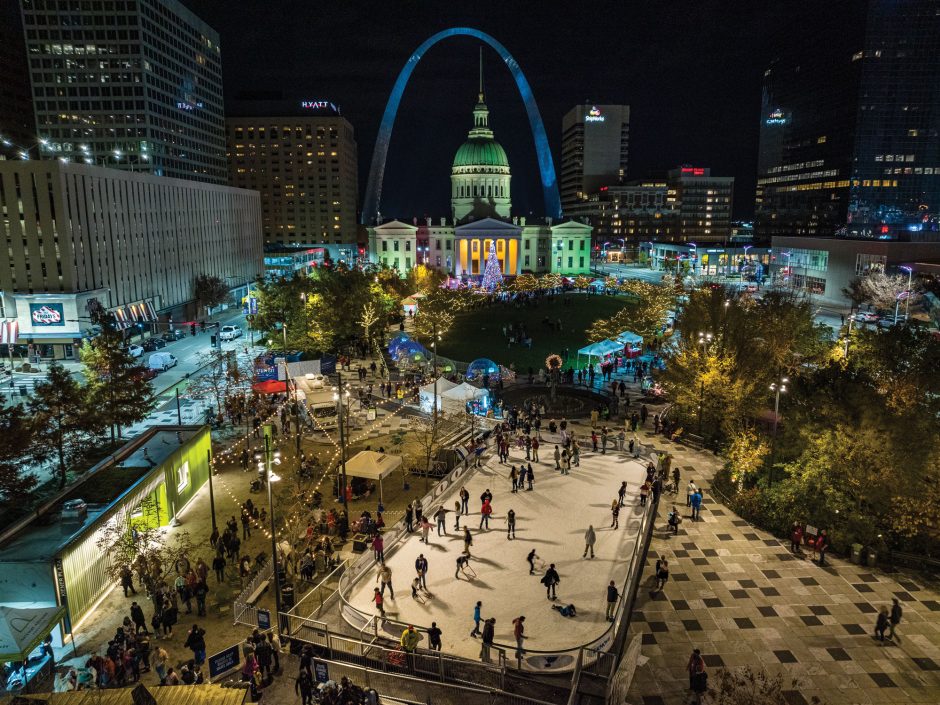
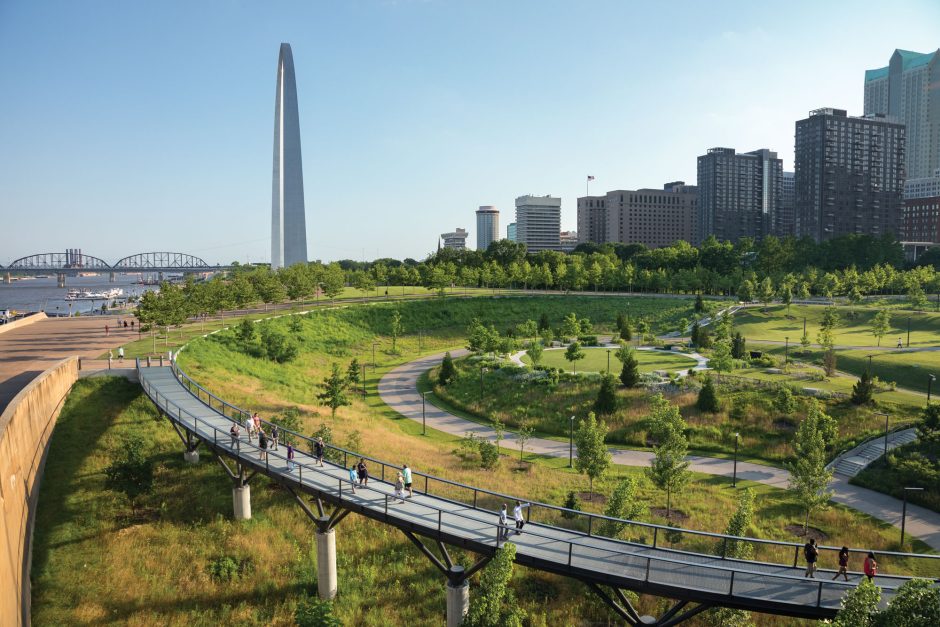
To read more articles like this, become a Mizzou Alumni Association member and receive MIZZOU magazine in your mailbox. Click here to join.




